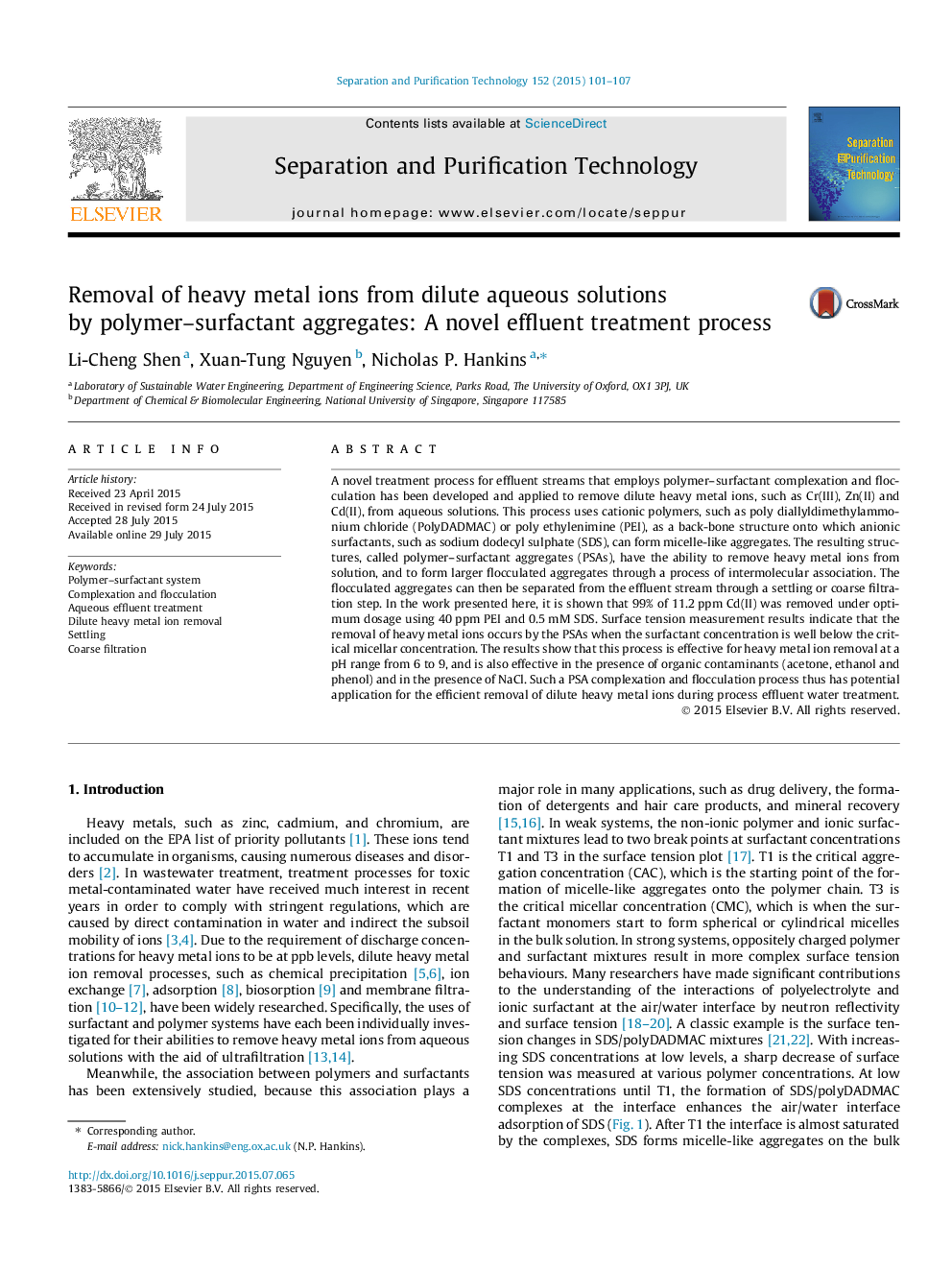| Article ID | Journal | Published Year | Pages | File Type |
|---|---|---|---|---|
| 640383 | Separation and Purification Technology | 2015 | 7 Pages |
A novel treatment process for effluent streams that employs polymer–surfactant complexation and flocculation has been developed and applied to remove dilute heavy metal ions, such as Cr(III), Zn(II) and Cd(II), from aqueous solutions. This process uses cationic polymers, such as poly diallyldimethylammonium chloride (PolyDADMAC) or poly ethylenimine (PEI), as a back-bone structure onto which anionic surfactants, such as sodium dodecyl sulphate (SDS), can form micelle-like aggregates. The resulting structures, called polymer–surfactant aggregates (PSAs), have the ability to remove heavy metal ions from solution, and to form larger flocculated aggregates through a process of intermolecular association. The flocculated aggregates can then be separated from the effluent stream through a settling or coarse filtration step. In the work presented here, it is shown that 99% of 11.2 ppm Cd(II) was removed under optimum dosage using 40 ppm PEI and 0.5 mM SDS. Surface tension measurement results indicate that the removal of heavy metal ions occurs by the PSAs when the surfactant concentration is well below the critical micellar concentration. The results show that this process is effective for heavy metal ion removal at a pH range from 6 to 9, and is also effective in the presence of organic contaminants (acetone, ethanol and phenol) and in the presence of NaCl. Such a PSA complexation and flocculation process thus has potential application for the efficient removal of dilute heavy metal ions during process effluent water treatment.
Graphical abstractFigure optionsDownload full-size imageDownload as PowerPoint slide
